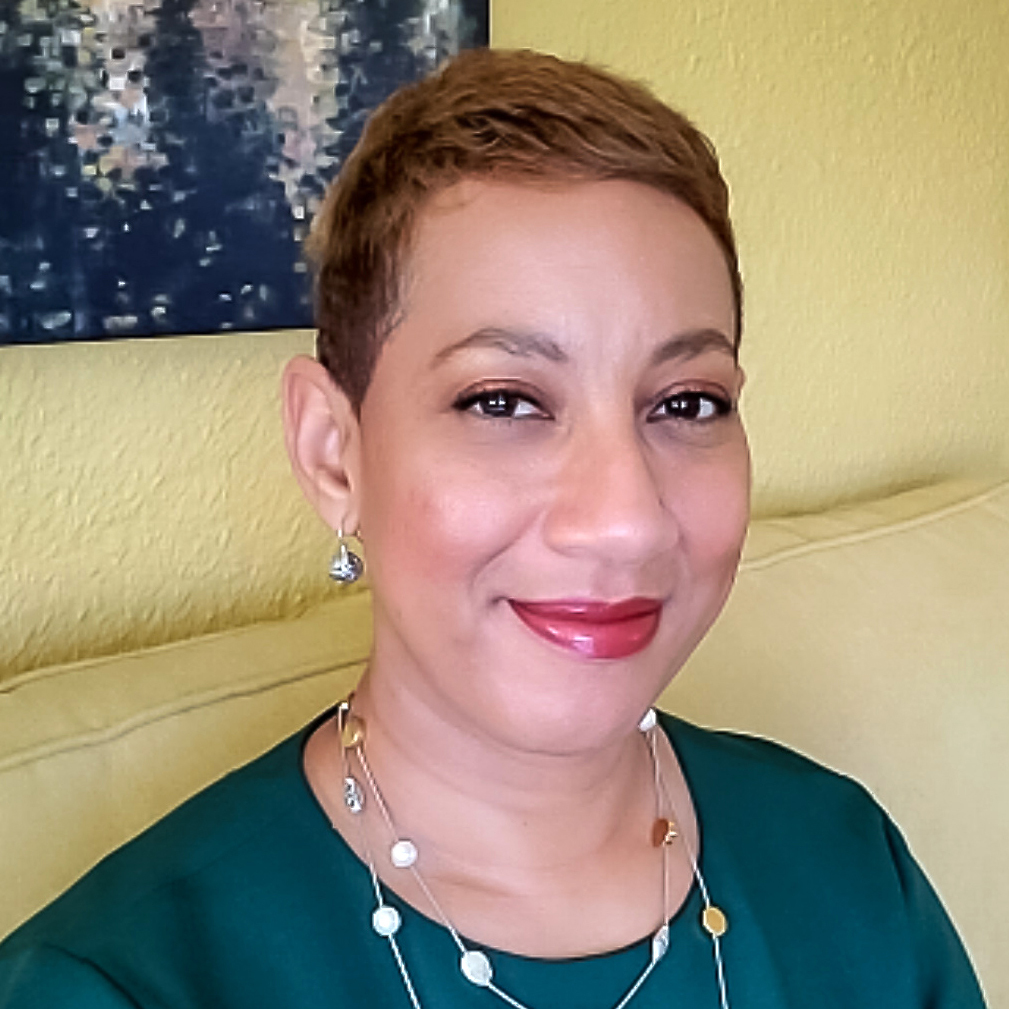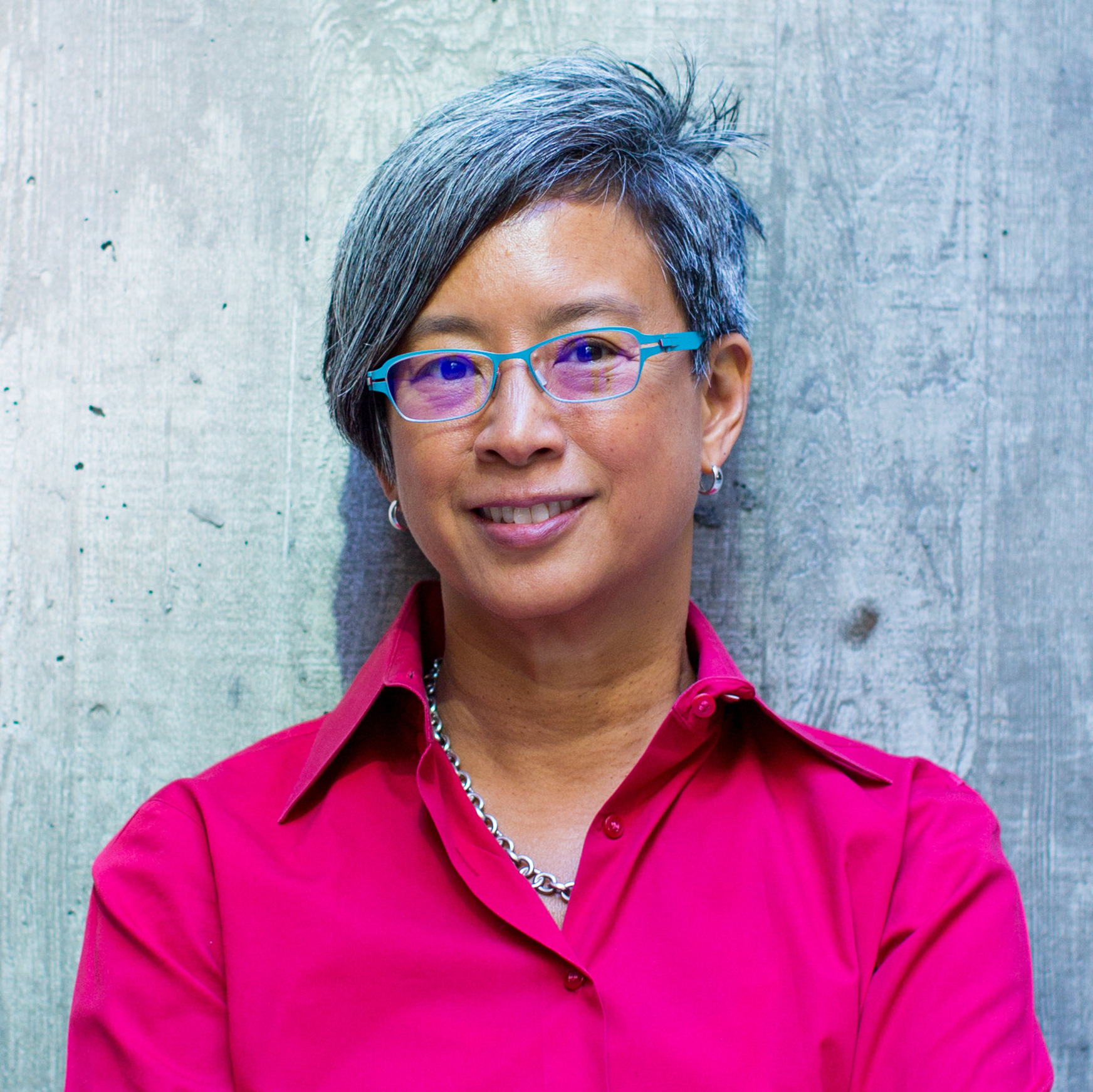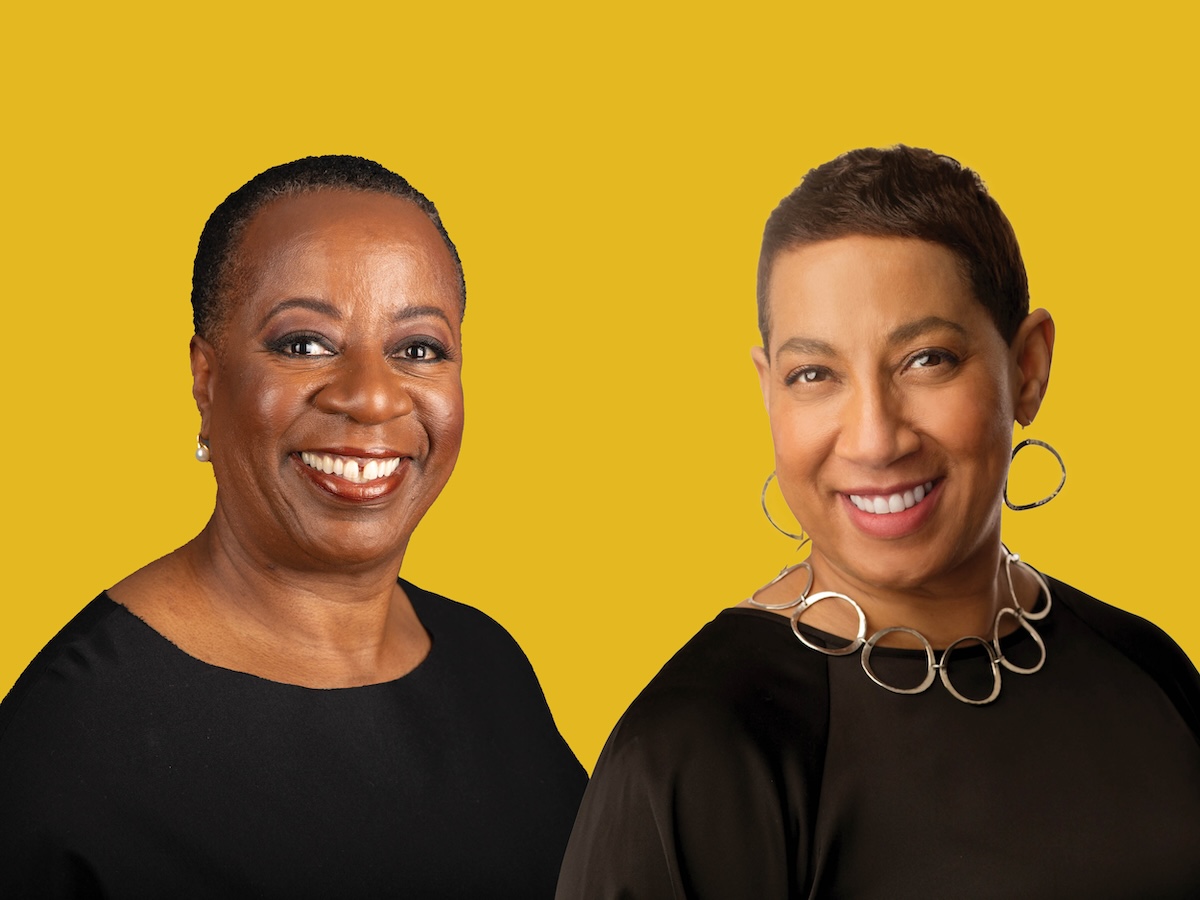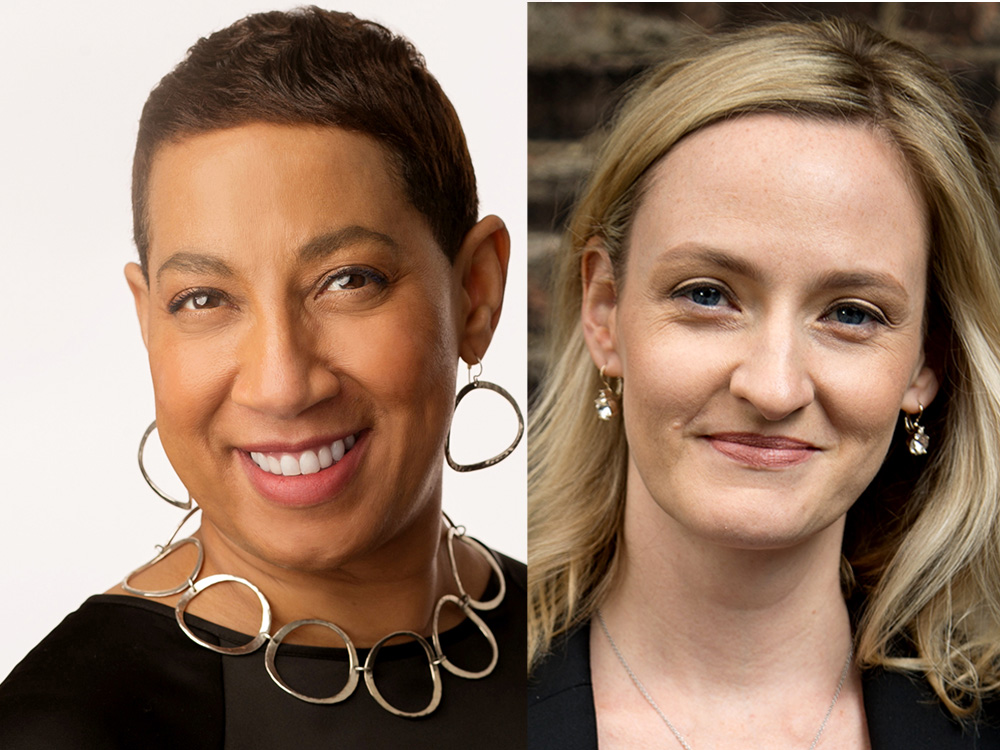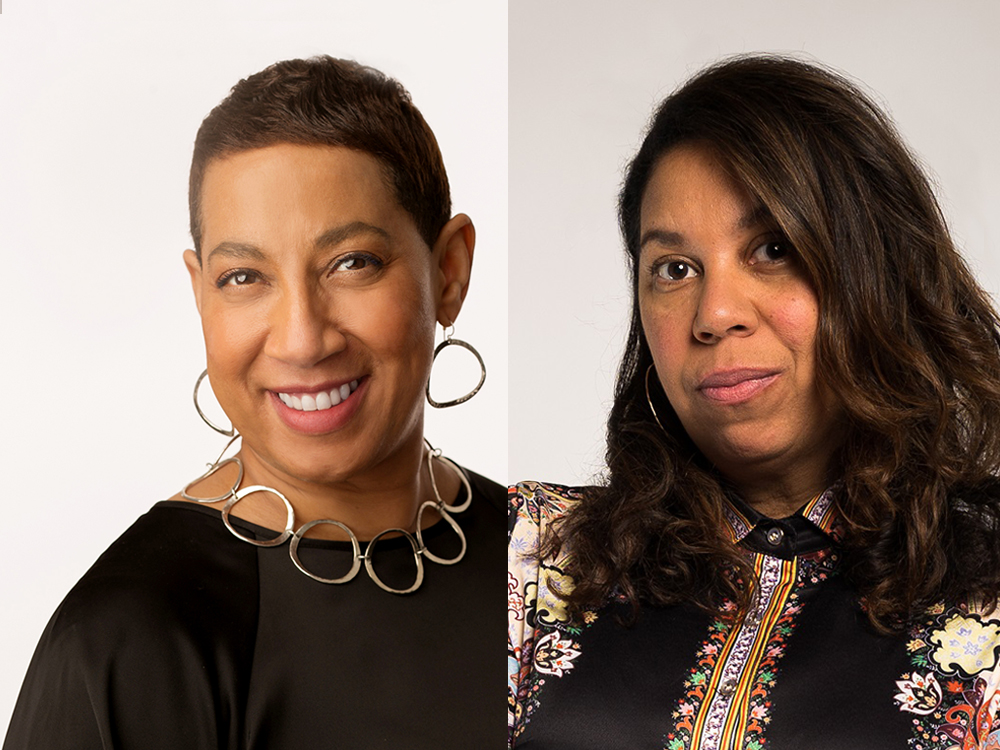A Candid Conversation About How to Drive Innovation and Impact
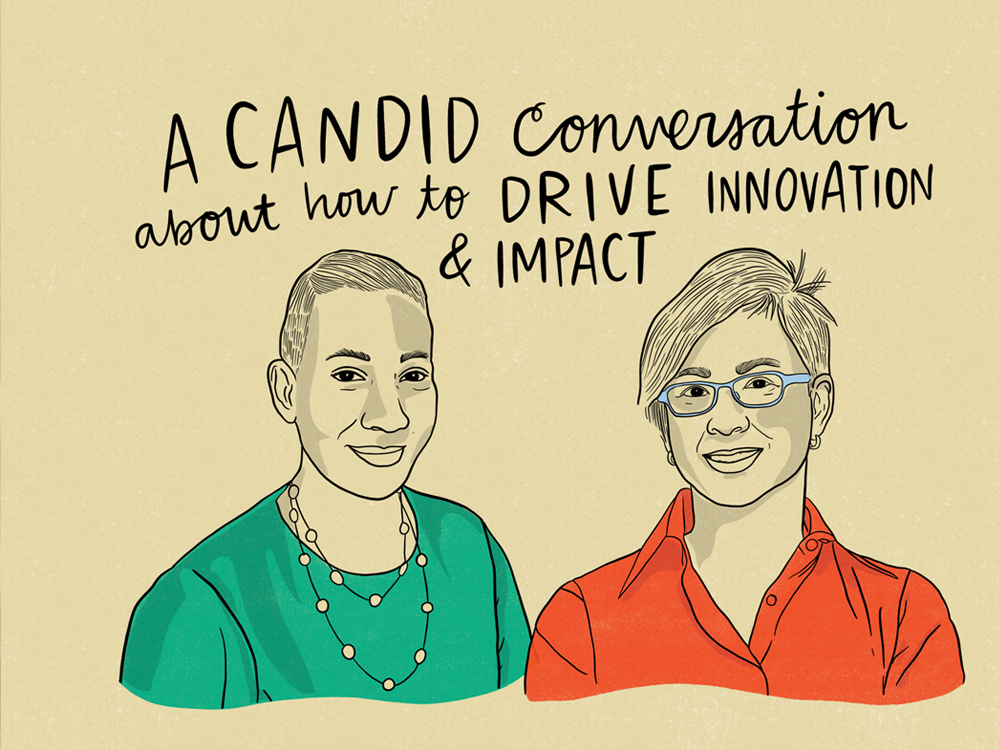
Adopting emergent learning practices can have a transformative effect inside organizations by creating a sense of agency that empowers people to lead from their seats to challenge the status quo and encourage innovation. But even organizations eager to embrace change may find it difficult to move forward with charting new territory. That’s where the interdisciplinary mindset of Candid CEO Ann Mei Chang, developed through a career steeped in Silicon Valley, is invaluable to the social sector.
In conversation with PEAK’s Satonya Fair, Chang shares her unique perspective on reenvisioning how philanthropy operates by adapting methods used in the tech sector to drive innovation and impact. Together, they explore the imperatives of reframing risk, embracing iterative learning, and engaging disparate voices—ultimately rebalancing power and creating true partnerships between funders and nonprofits.
Fair: We always have to battle against this notion of doing things the way they’ve always been done and the anxiety around change. That’s why I hope this conversation will activate others to start thinking about innovation and emergent learning in different ways. As a historically rigid field—and I hate to say that, but I think we are—what might philanthropy learn from organizations that center innovation?
Chang: Think big. If you don’t take a big swing, you’re unlikely to end up doing something transformative. For our sector, that involves placing lots of small bets rather than picking one winner, keeping a laser focus on determining what, ultimately, leads to more impact.
The problems that we’re facing in the social sector are getting bigger and more complex, and our solutions just aren’t keeping up with them. It’s not that we’re not working hard: I know there are so many people working themselves to exhaustion. And yet, the problems grow.
In the course of the pandemic, we’ve experienced lots of tragedy, but it also forced us out of our comfort zones. It gave us an opportunity to develop new muscles—to place a lot of small bets in the relentless pursuit of impact. Now’s the time, on both the funder side and the nonprofit side, to get out of our traditional modalities. What’s come out of that? Some things worked, and some things didn’t, but we now have a bunch of interventions to carry forward. And I think that there’s hope that we can continue innovating.
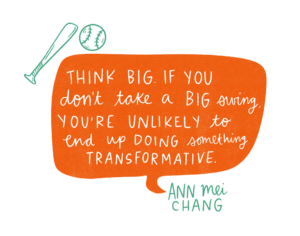
Fair: Test, iterate, learn, improve, right? I do think we’re a little afraid to do that. But change has been happening faster than ever, and this is not an agile sector. How do you see Candid’s role in equipping the sector—funders, nonprofits, community-based organizations—to better pivot and respond?
Chang: When we have more context and knowledge, we can make better decisions and we can learn more quickly. I see Candid’s core role in the sector as helping us all share data and be more efficient with sharing—not sharing the same data a hundred times over in slightly different ways, but coalescing data in a way that’s meaningful for everyone. That’s really the foundational part of learning.
For example, one of our major initiatives is a demographic data campaign called Demographics via Candid, which empowers nonprofits to share data in a form that can be used by others. We are seeing so much demand across the sector for understanding demographics, DEI, and racial equity. Funders are bombarding nonprofits with requests for demographic information, but using different slices, or different categories, so that they have to collect the data over and over again. It is vastly inefficient for the sector.
By collating that data and making it freely available, the sector can start to understand what the problems look like and where the marginalized organizations are that need to be lifted up. We can’t make a lot of progress if we don’t understand where we’re starting from.
Fair: How do we get to a place where nonprofits are empowered to tell funders to do better? And how does that feed into the outcomes that you hope to see by 2030?
Chang: Nonprofits need to be able to stand up and ask for things that will help them be effective, and foundations need to be willing to cede power so that the equation works better. So we’re working through data with both sides to help in rebalancing power.
We’re thinking about a framework that looks at doing the most good across three dimensions. The first is equity. We’re not going to be doing the most good if we’re not equitable in terms of where the resources go.
The second is effectiveness. Do you have some measure of whether your work is doing good? That could be getting community feedback, or a randomized control trial, or any number of points in between. And do you have a feedback loop that helps you continue to get better?
The third is scalability. I don’t think we have the right terminology for this yet, but it’s about systems change: Are we just addressing the immediate issues, or are we also investing in changing the system?
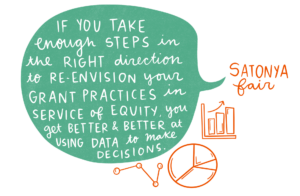
Fair: If you take enough steps in the right direction to reenvision your grant practices in service of equity, you get better and better at using data to make decisions. There’s so much alignment in your approach. How does Candid approach innovation to learn and push past its own boundaries?
Chang: Innovation comes from the unexpected, from bringing disparate perspectives together, from casting a wide net. The Candid Innovation Fund, for example, invests in ideas that come from our staff—new products, new features, new services, new markets—that we might want to focus on.
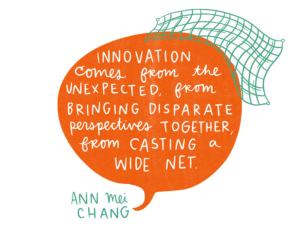
Rather than depending on the executive team to come up with “the big thing we should do,” we want to tap into the ingenuity of people across our staff, who all have different perspectives, and who are all closer to the work. Once we place a lot of those small bets and find the ones that have real traction, we can continue to build on them.
Fair: PEAK is in the same frame of mind. While we don’t have an innovation fund, we’re trying to change the way we work. People have talents, interests, and big ideas, but if everyone is always focused on delivering and being tactical, they don’t have an opportunity to do that blue-sky thinking. And so we are working to be better at that as an organization. On your end, it sounds like you’re in that process of creating an emergent learning culture. What should other leaders, at foundations and nonprofits, be doing to create and nurture similar cultures?
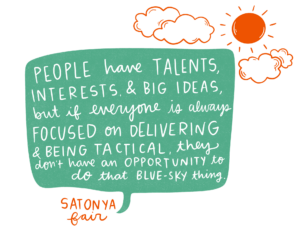
Chang: Of course, our innovation fund is a luxury to have. Innovation is something that is so hard for nonprofits to do because they are often working on a shoestring budget, and with grants that don’t allow them the flexibility to try new things that might not work.
What’s really ironic is that, in the corporate world, investors see a small R&D [research and development] budget and they all short that company’s stock. It says to them, “That company is not investing in the future.” In the nonprofit sector, where R&D counts as overhead, it’s the opposite. I think it’s one of the main reasons that we keep falling behind problems.
Fair: It feels like a chicken-and-egg problem: As a nonprofit, you’re not going to get better at serving communities unless you can be innovative and flexible and think outside the box, but you’ve got to get some money and space to be able to do that. How do we break this cycle?
Chang: Funding is the biggest challenge. Like I said, I’m hopeful because of the commitment to more flexible funding at the beginning of the pandemic. But restrictive funding is the biggest impediment, and because we’ve lived under that regime for so long, it’s baked into our organizational cultures. So we have a responsibility to do things differently. Most breakthroughs seemed crazy when someone first proposed them, so we don’t want to cut ideas off: I think small bets, on a lot of different ideas, is really important.
So is setting the expectation that, when we’re innovating, we’re going to fail more than we succeed. In fact, if we don’t feel we’re failing more than we’re succeeding, we’re probably not taking enough risks.
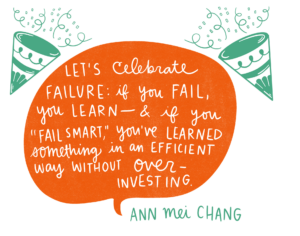
Fair: I second your “fail more” point. We do battle in this sector with perfectionist culture. People are not comfortable pitching ideas or new ways of working if there’s a risk of those ideas not panning out well.
Chang: The second thing I think we should do, or do more of, is asking ourselves and each other the hard questions. We’re all so mission-driven and so collegial—I love that about the sector. But the downside of that is when we don’t do enough to play devil’s advocate—asking the hard questions around what might go wrong in order to learn more and make something better.
The third is setting audacious goals, the kind we know we will fail if we continue with business as usual. If your goal is 10 times as much as before, then you need to start thinking outside the box and trying completely different approaches.
Finally, put impact first. We all say this, but we don’t all do it. A phrase often used in the innovation community is, “Fall in love with the problem, not the solution.” Ultimately, we’re here to solve problems, not market solutions.
Fair: How have strategic partnerships informed Candid’s strategy, especially now as you’re leading the organization in developing new impact models and ways of working?
Chang: Candid partners with over 100,000 organizations who share their data on the Candid platform: nonprofits claiming their profiles or earning a seal; foundations claiming their own profiles, e-reporting, and sharing grants data with us. What makes our data better and richer is our partnership with all these different organizations.
We also have partnerships that are much more specific. We recently launched a multiyear partnership with ABFE, which is leveraging Candid data and ABFE’s subject-matter expertise to really help us understand Black leadership in the sector.All of this partner work is very intersectional. We are not the experts on all of these topics, but we have data and a platform to help us all better understand the interconnections and how we can best make a difference collectively.

Fair: PEAK is going into the next year focusing on our Learn, Share, Evolve Principle to advance the emergent learning model, which includes being a change practitioner, leading from where you are, and being title-agnostic in bringing voices and ideas to the front of the room. We’re calling on grantmakers to design practices that promote learning and sharing broadly. What’s your call to action for funders to elevate their learning for the benefit of the sector overall?
Chang: Really consider what data you’re asking for from nonprofits that others are also asking for, and look at how you can reduce the burden on nonprofits to supply that data over and over again in slightly different ways. Dedicate a full-time staff member or a full-time department to doing that. If the past few years taught us anything, it’s that we need to shift the power balance. Funders have to take on more of the due diligence responsibility rather than burden nonprofits with a specialized form to fill out for each funding source.
It all comes back to data transparency. We will learn on our own and from each other by gathering data and using it in meaningful ways to make our decisions. Equity is a really important piece of this because access to data is not yet equitable. There are financial and nonfinancial barriers that get in the way of marginalized organizations being able to participate fully. They may not have the expertise to use our tools to their fullest effect, or know how to fundraise using the tools. That’s why Candid has a learning agenda to build the capacity of nonprofit leaders to take advantage of these tools.
Fair: We built the walls, so we could tear them down for sure. And every funder has a role to play in that. I have been really excited to see you come into your leadership role at Candid and to see the innovation, the different ways of thinking, and the excitement from the team that has resulted, as well as these new partnerships. We are so looking forward to a future together, working as strategic partners with Candid to advance great ideas and arrive at a place where funders and nonprofits are aligned, and where we can do more and better because we are aligned.
